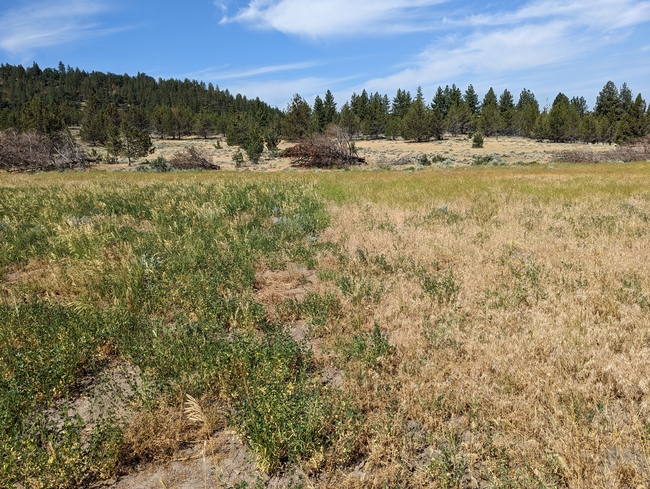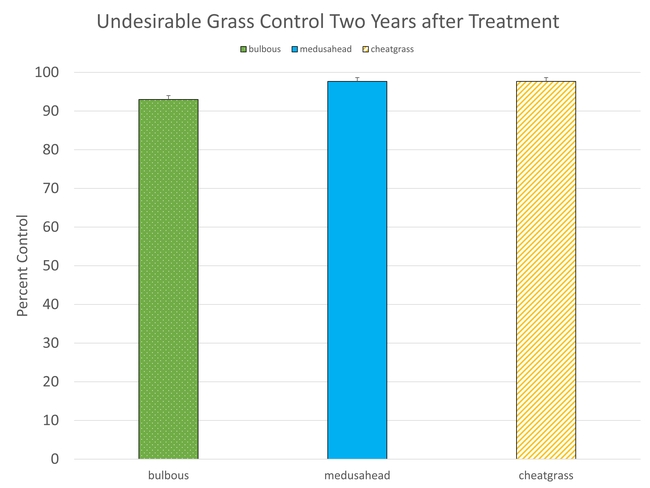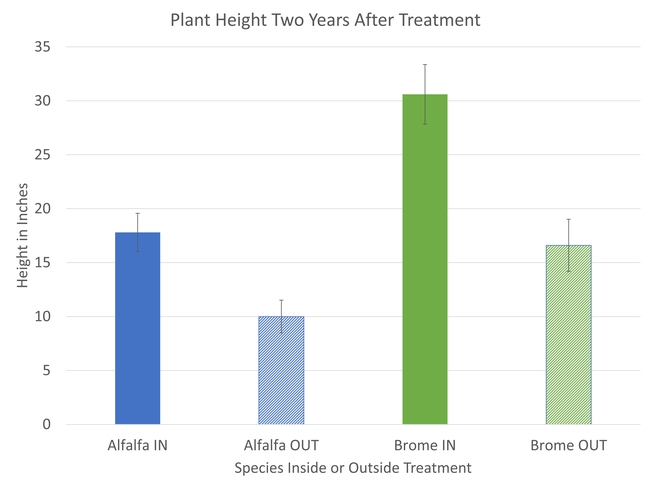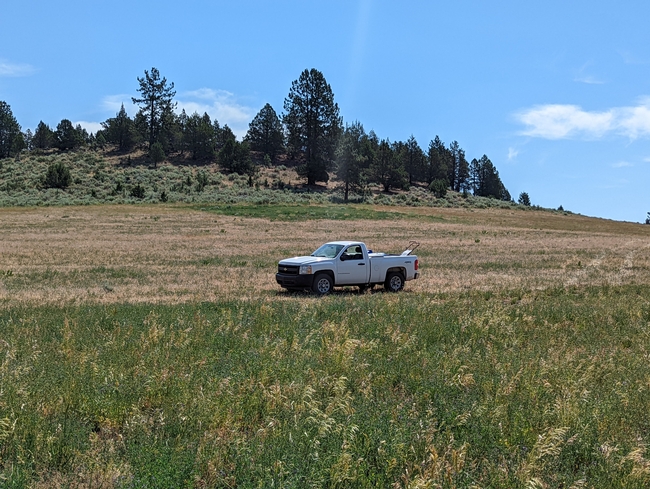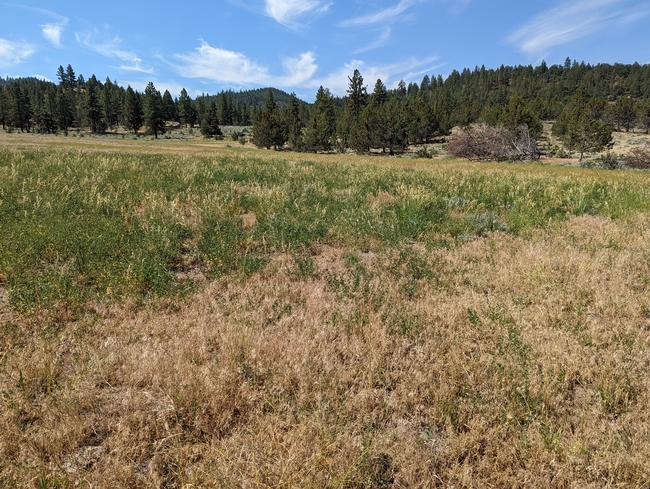Winter annual grasses are one of the major invaders on rangelands in the intermountain region. They also can be problematic in a variety of systems from farm ground to forestry (cheatgrass in particular). Control options exist from physical means to chemistry but there doesn't appear to be any silver bullet. They can be suppressed, but typically rear their head reinvading the system within a few years. The impacts are far and wide, from creating fine fuels for wildfire, to being a poor source of forage for livestock on the range.
Picture one- Area to the left was treated with indaziflam in the fall of 2020, the area to the right was untreated and continued to be infested with non-desirable species like cheatgrass.
Over the past few years, we have been doing quite a bit of work with a “newerish” chemistry indaziflam for annual grass control. This work has built on much of the research done in other states which has shown multiyear annual grass control with a single application. (Google Sebastian + indaziflam for some of the early work done in Colorado). Unlike many herbicides which are late to the California market, indaziflam has been registered for quite a few years as Alion in the tree and vine market, or as Esplanade in the roadside vegetation management market. But what we didn't have in the Western US was a label that could be used on grazing lands. This is where California was late to the table, as a grazing label got approved by the EPA a few years back, but was just recently approved as Rejurva last November here in California. In the part of the state I work in, there are more cows than people and a product without grazing tolerances doesn't do a lot of good.
I wanted to share a few pictures from our research with indaziflam as well as a couple of pictures from a case study this past year. One of my collaborators on the initial trial sites in 2016, was interested in seeing what indaziflam would look like on a pasture he planted years back. They came in, farmed the ground and planted a mixture of bromegrass and dryland alfalfa. Initial establishment was good! But over the years cheatgrass, medusahead and bulbous bluegrass (short-lived perennial, but poor forage) had come to dominate the stand. When I first saw the site, you could see the desirable species, but they were small and drought-stressed competing with all of the annual vegetation present.
We decided to put out three 1/3 acre plots of indaziflam (5 oz/acre of product), to see if we could release the desirable perennial forages. I was scared to do anything larger, because some of my other sites with indaziflam in annual grass monocultures resulted in bare ground 3 years following treatment. Bare ground on a 10*20 ft. plot, is a whole different ball game than the issues that can arise (erosion, no forage etc.) on bare ground over many acres.
Picture two- Bareground three seasons after a monoculture of medusahead was treated with indaziflam (Esplanade).
Treatments were made in October of 2020 before any annual grass germination had occurred. The following year in 2021 control looked pretty good, but it was such a dry winter. There was more growth from the desirable forage species, but they could have benefited from more moisture. With indaziflam multi-year control of these undesirable grasses can be achieved, and we got good control into 2022 which was dry but not as dry as the previous winter (chart one). We saw over 95 percent control of cheatgrass as well as medusahead, and over 90 percent control of bulbous bluegrass. In some of our trials, bulbous has been tolerant to indaziflam and in others has been killed. Either way the rancher was happy to see little bulbous in the plots. They were also excited to see the desirable forage species response. Alfalfa was nearly 10 inches taller in the treated area during 2022, and the bromegrass (while sparse in some parts of the field) was nearly 15 inches taller (chart 2). The response could have been even greater on a wet year.
Chart One- Percent control of the three non-desirable grass species in the pasture two seasons after the application was made. Error bars indicate the standard error of the mean.
Chart Two- Height of alfalfa and the meadow bromegrass inside and outside the treated areas in 2022. Error bars indicate the standard error of the mean.
Picture Three- Looking from inside the treated area across the untreated pasture. Notice the difference in plant height of the alfalfa and bromegrass. The green square in the distance behind the truck was another one of the treated portions of the field.
There still needs to be a lot of work done with indaziflam to see where it might fit in rangeland annual grass control within our state. If you are dealing with a monoculture, bare ground and the problems associated with it are a real possibility after an indaziflam application. However, in areas where there are established perennials being suppressed by the undesirable annuals, indaziflam has the potential to release those perennial species from competition in a dryland pasture setting.
Picture four- Looking from untreated potion of pasture with dry cheatgrass and bulbous into the area of the pasture treated with indaziflam.
